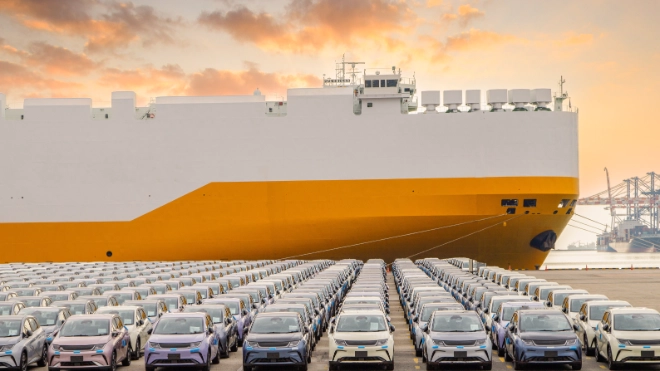
The fallout of a trade war
President Trump’s combative approach to international commerce is creating uncertainty around global trade and boosting demand for credit insurance as the threat of non-payments grows. The latest announcements on tariffs by the US administration, that include a universal minimum tariff and higher tariffs for some countries, have proven to be more substantial than expected.
All the tariff measures announced so far in 2025 have raised the average effective US tariff rate to well above 20%, a level not seen since the early 1900s. Just yesterday President Trump declared a temporary halt on tariffs for numerous trading partners who did not respond with counter-tariffs. In contrast, China, which did retaliate, will see its tariffs increased to 125%. The next steps in trade policy remain uncertain.

The prospect of a prolonged trade war is casting a shadow over several sectors, which are likely to see much more severe impacts than the broader macroeconomic effects.
Globally speaking, the most vulnerable sectors are those with long supply chains that cross international borders. This includes machinery, which is expected to see 5ppt lower growth in 2025 and 2026, motor vehicles (-4ppt), and electronics (-3.3ppt). Domestic-oriented industries are more insulated from the trade war, such as food and beverage. But these sectors will still face rising indirect risks, such as reduced domestic demand amid higher prices and worsening sentiment which will take a bit longer to materialise. Accordingly, the global food and beverage sector will see at least 0.7ppt lower growth by end-2026. High uncertainty and the strain on investment will also impose a drag of over 3ppt on construction output.

President Trump has pivoted to protectionism with a speed and force that have left exporters reeling and economic forecasters scrambling to update their predictions. The gap between threat and action, which businesses typically use to stock up on tariff-threatened goods, has been vanishingly thin. In response, businesses have turned to credit insurance to provide security in a highly uncertain world. Insurers are anticipating a significant boost in demand for the first half of 2025, particularly for short-term risk cover. However, geopolitical tensions and the US administration’s volatility make longer term trends more difficult to predict, and many insurers are bracing for a rising tide of claims as insolvencies spike.
Trump's announcements weigh on growth prospects
The prospects for trade growth have been undermined by Washington’s strident protectionist stance. Atradius’ own forecasts now put global trade growth at 2.5% for both 2025 and 2026, down from the 3.3% and 3.0% that we predicted in December.
Tariffs raise the cost of trade, effectively lowering demand for traded goods, and hamper trade growth
"The time for extra trading ahead of tariffs that can push up trade figures temporarily has hardly been there. It’s been a dizzying start to 2025 for importers and exporters" continues Lorié.
The direct impacts of tariffs are only part of the story. Both tariffs and the threat of tariffs impact business confidence and, with it, investment strategies. Businesses are far less likely to risk major capital expenditure for future demand that is, at best, highly unpredictable. The tremors caused by tariffs are felt throughout economies. Import duties are inflationary, which means central banks are likely to keep interest rates higher for longer, adding to the cost of doing business. Rising costs and business uncertainty weigh on consumer confidence and, inevitably, demand falters.
“Although the starting situation for each economy in a trade war is different, the impact of an exchange of tariffs is essentially the same” says Lorié.
A trade war has no winners. We already see this reflected in global growth adjustments showing a more pessimistic picture than we previously anticipated.
The problems caused by tariffs are generally true for all trade war participants, though the dollar’s role as a safe haven currency may offer the US economy a small measure of protection. In the longer term, it’s difficult to know how long the Trump administration will be prepared to maintain high import duties in the face of rising prices and a slowing economy, which could prompt a consumer backlash.

Credit insurance: a canary in the coalmine?
Faced with this level of uncertainty, exporters naturally turn to credit insurance to protect trade assets. According to the latest Berne Union Business Confidence Survey, there is strong confidence in rising demand for short-term export credit insurance in the first half of 2025, driven by this new wave of tariffs.
That view is supported by our growth forecasts. We may have downgraded our prediction for growth, but global trade is still predicted to outpace last year’s underwhelming figure of 1.8%. While trade flows may re-route, supporting expectations of some stronger growth, businesses are likely to continue trading relatively freely in the short term. However, they will increasingly turn to credit insurance to guard against payment problems. Confidence in the credit insurance sector is high given its capacity to help insured companies establish their commercial credit lines in economic turmoils.
At the same time, claims risks are beginning to rise. In the Berne Union Survey, commercial underwriters registered an index score of 75.0 for expected claims in the coming period. A score above 50 indicates an expectation that claims will rise. European automotive, construction and commodities sectors are considered a particular risk. Rising claims suggest a more difficult trading environment, a growing number of bad debts and increased business insolvencies.
“Business failures were already relatively high in many economies before the latest tit-for-tat tariff announcements, driven by geopolitical tensions and economies struggling to return to sustained growth, especially in Europe,” says Lorié. “The fear is that tariffs could lead to a new wave of business failures and a rising number of insurance claims from firms facing a loss of revenue from non-payment of invoices.”

A cautious 'wait and see' approach
The Trump administration’s sceptical stance on climate science may further dampen trade in goods related to the renewable energy transition. In such an unpredictable climate, businesses are increasingly hesitant to commit to major deals, often adopting a cautious “wait and see” approach.
What is clear, however, is that the administration’s protectionist policies are fuelling a volatile global trade environment. In response, exporters are turning to credit insurance as a key risk mitigation strategy. Over the longer term, rising tariffs are expected to hinder trade growth — even in the context of Europe’s renewed focus on defence spending. With corporate insolvencies likely to rise, the risk of non-payments increases with every escalation in the economic standoff between the world’s powerhouse economies.
- Growing trade uncertainty and tariff disputes are driving businesses to seek protection against non-payments.
- Companies are hesitant to invest amid unpredictable trade policies and a tougher trading environment., increasing financial risks.
- Import duties raise business costs, potentially leading to prolonged high interest rates and weaker consumer demand.




































